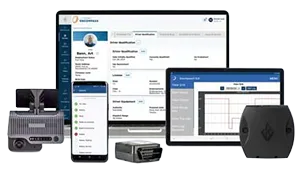EPA reinforces the Risk Management Program to bolster protections against chemical accidents
March 1, 2024
The Environmental Protection Agency (EPA) has finalized amendments to the Risk Management Program (RMP). The agency’s amendments apply to the Safer Communities by Chemical Accident Prevention Rule, initially proposed in August 2022, which implements the most protective safety provisions for chemical facilities in history.
To better protect at-risk communities from chemical accidents, the final rule seeks to:
- Improve chemical process safety;
- Assist in planning for, preparing for, and responding to accidents; and
- Increase public awareness of chemical hazards at regulated sources.
The RMP rule, codified at 40 CFR Part 68, applies to all owners and operators of a facility (or stationary source) that manufactures, uses, stores, or otherwise handles more than a threshold quantity of a toxic or flammable substance (listed at 68.130) in a process. Part 68 requires regulated facilities to develop and implement a Risk Management Plan for all covered processes.
Covered facilities must submit the Risk Management Plan to EPA and revise and resubmit the Risk Management Plan to the agency every five years.
Who does the final rule impact?
The agency’s final rule applies to all sources regulated by the RMP rule at 40 CFR Part 68, which total more than 11,700 facilities. It also has more rigorous requirements for a subgroup of more accident-prone facilities that pose the greatest risk to communities.
What are the changes to the rule?
EPA’s final amendments to the rule:
- Require facilities to perform a safer technologies and alternatives analysis, and for certain facilities in industry sectors with high accident rates, implement reliable safeguard measures;
- Expand employee participation, training, and opportunities for decision-making in accident prevention;
- Require third-party compliance audits and root cause analysis incident investigations for facilities that have had a prior accident;
- Ensure chemical release information is shared timely with local responders and a community notification system is in place to warn of an impending release;
- Emphasize the requirement to evaluate risks of natural hazards and climate change, including any associated losses of power; and
- Increase transparency by providing access to RMP facility information for nearby communities.
EPA will publish the rule alongside a tool that will give the public access to information for RMPs in nearby communities. The final rule takes effect 60 days after it’s published in the Federal Register.
Key to remember: EPA finalized amendments to the Risk Management Program to improve safety at facilities that use and distribute hazardous chemicals.
J. J. Keller's FREE SafetyClicks™ e-newsletters bring quick-read transportation, industrial & manufacturing, and human resources compliance news right to your inbox.
March 1, 2024
Author{not populated}
TypeIndustry News
Industries{not populated}
Related TopicsAir Programs
Risk Management Program
Governing BodiesEnvironmental Protection Agency (EPA)
Citationsr40CFR68



